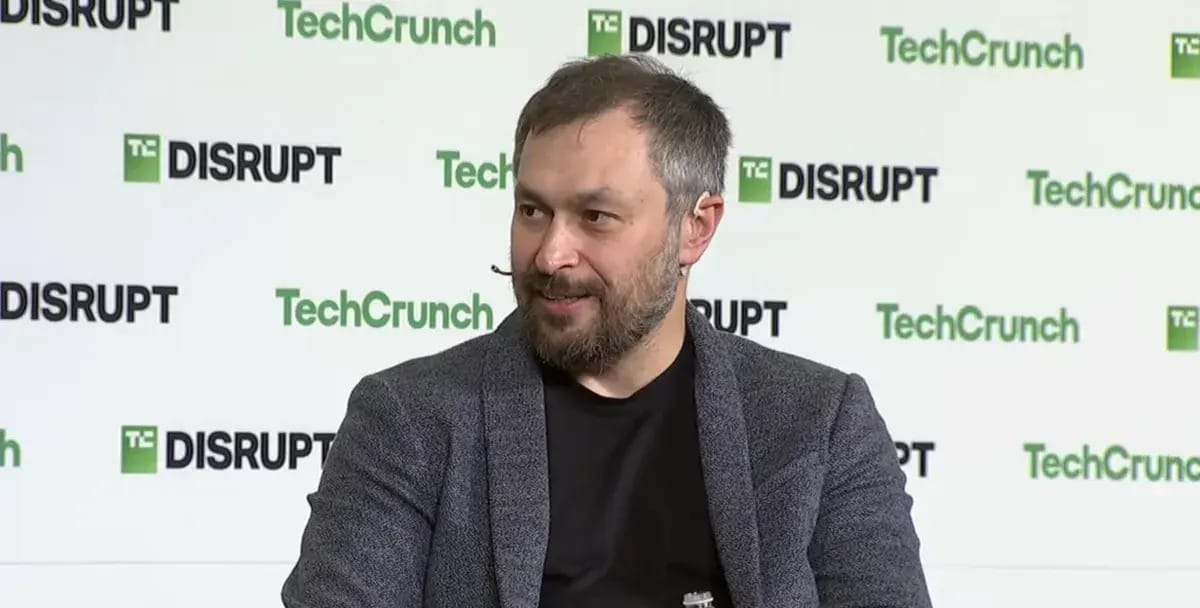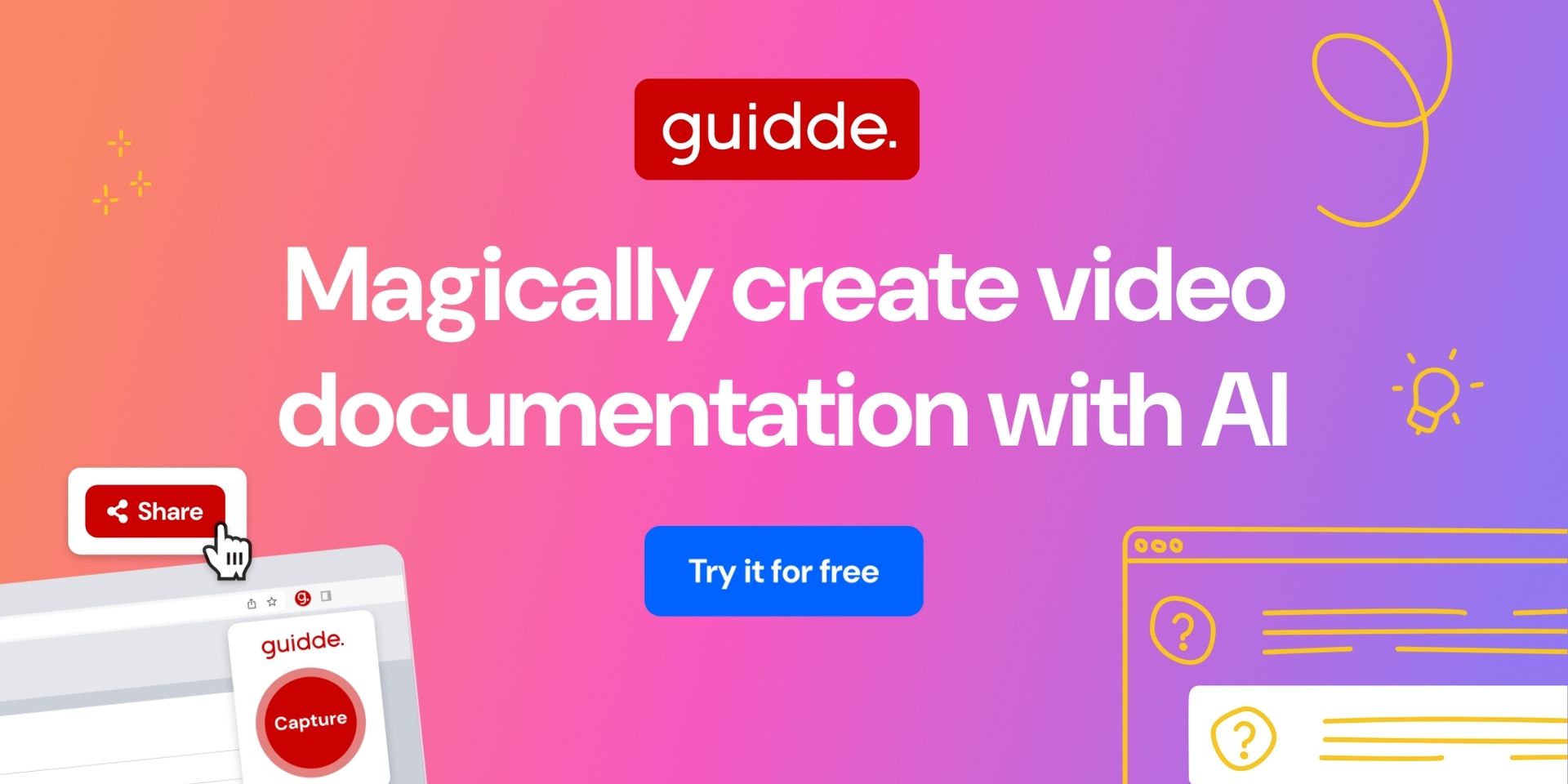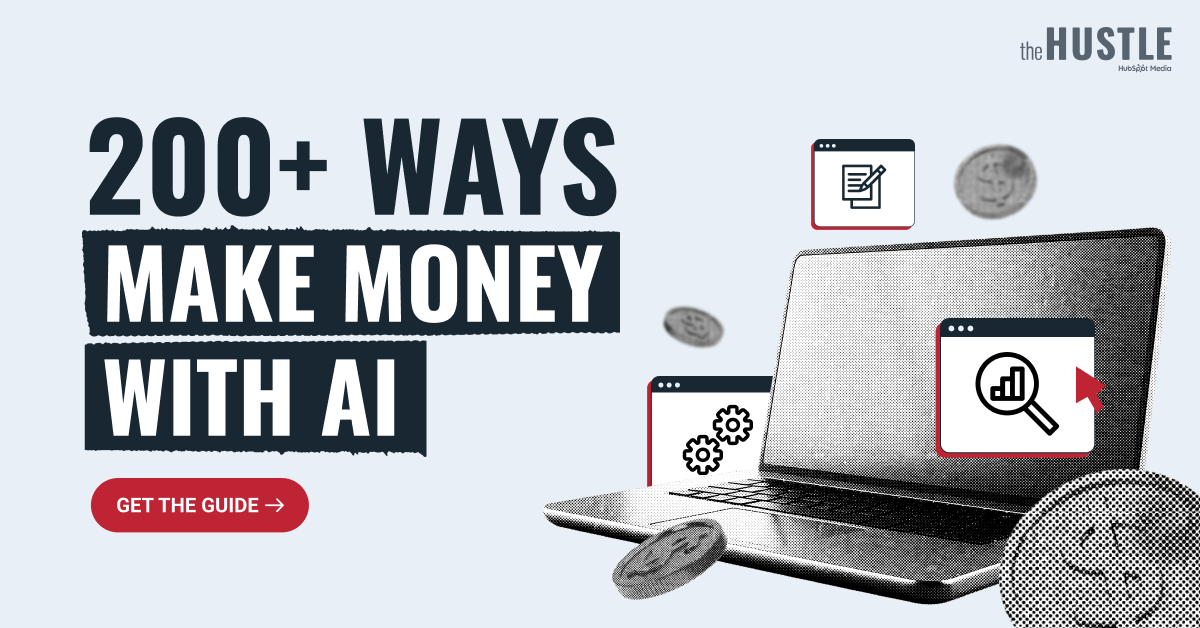- Unbelievable AI
- Posts
- Solana co-founder Anatoly Yakovenko is a big fan of agentic coding
Solana co-founder Anatoly Yakovenko is a big fan of agentic coding
Plus: Cluely’s Roy Lee on the ragebait strategy for startup marketing

In this Newsletter Today:
Solana co-founder Anatoly Yakovenko is a big fan of agentic coding
Cluely’s Roy Lee on the ragebait strategy for startup marketing
Figma acquires AI-powered media generation company Weavy
AI Tutorial
5 Best AI Tools
TODAY'S AI" NEWS
Simplify Training with AI-Generated Video Guides
Simplify Training with AI-Generated Video Guides
Are you tired of repeating the same instructions to your team? Guidde revolutionizes how you document and share processes with AI-powered how-to videos.
Here’s how:
1️⃣ Instant Creation: Turn complex tasks into stunning step-by-step video guides in seconds.
2️⃣ Fully Automated: Capture workflows with a browser extension that generates visuals, voiceovers, and call-to-actions.
3️⃣ Seamless Sharing: Share or embed guides anywhere effortlessly.
The best part? The browser extension is 100% free.
Solana co-founder Anatoly Yakovenko is a big fan of agentic coding

Anatoly Yakovenko, co-founder and CEO of Solana Labs, spoke at TechCrunch Disrupt 2025. He strongly supports “agentic coding.” This method uses AI agents to assist with or handle programming tasks more independently. He said that after years of working as an engineer, he’s now okay with taking a more oversight role while AI “does the heavy lifting.””
Key Points:
Yakovenko said that with AI agents, he can now “just watch … and almost smell when it’s going off the rails.” He no longer has to write every line of code himself.
He pointed out that Solana's architecture supports fast, cheap transactions and high throughput. This is perfect for “agentic coding” models. In these models, agents interact with smart contracts and blockchain operations. The system can easily manage quick, repeated interactions.
Yakovenko urged developers to see AI as a force multiplier, not a replacement. He said, “It takes away the hard work and the annoying work,” while letting humans handle creative decisions.
He stressed that even though the paradigm is new and experimental, he thinks it will change how software is built in the future. This is especially true for blockchain, smart-contract orchestration, and infrastructure roles.
Why It Matters:
This shows a change in how top engineers see software development. They are shifting from manual coding to overseeing and orchestrating agents.
For Solana and the broader blockchain world, this means more tools and frameworks could appear. AI agents might deploy, monitor, or self-correct smart contract systems.
It raises questions about how work is done, who builds what, and how governance and safety are ensured when agents act more independently.
If widely adopted, “agentic coding” could speed up innovation by reducing build time and boosting iteration speed. But it may also raise risks if oversight is lacking.
Cluely’s Roy Lee on the ragebait strategy for startup marketing

Roy Lee, co-founder of Cluely, says many startups fail. It's not that their product is bad; it's that they never get noticed. At TechCrunch Disrupt 2025, he stressed the need for bold, viral marketing. He calls this a “rage-bait” strategy to focus on building distribution first.
Key Points:
Lee says engineers and traditional marketers often struggle to create viral content. So, Cluely hires creators and influencers whose focus is “product or viral.””
He emphasises that distribution is as important as product-market fit: “If people don’t see your startup, it doesn’t matter how good the code is.”
Lee dismisses the label “rage-bait,” calling his approach “honest” and “authentic.” However, his method focuses on provocative, attention-grabbing content designed to trend.
Why It Matters:
In a busy AI-startup market, being visible and culturally relevant is as important as having strong technical skills.
The strategy brings up concerns about sustainability and ethics. It may attract attention, but can it create lasting trust with enterprise customers?
Founders should note that marketing and distribution must start from day one, not just after the product launches.
200+ AI Side Hustles to Start Right Now
AI isn't just changing business—it's creating entirely new income opportunities. The Hustle's guide features 200+ ways to make money with AI, from beginner-friendly gigs to advanced ventures. Each comes with realistic income projections and resource requirements. Join 1.5M professionals getting daily insights on emerging tech and business opportunities.
Figma acquires AI-powered media generation company Weavy

Figma has announced the acquisition of the AI-powered media generation startup Weavy. Weavy’s technology lets users merge different AI models and editing tools on a single canvas. This helps in creating and improving image and video content. Figma will add this feature to its platform, now called “Figma Weave.”
Key Points:
Weavy offers a node-based interface. This lets creators connect prompts, branch workflows, compare results from different models, and remix outputs. You can do all this on one canvas, so there’s no need to switch between apps.
Weavy will start as a standalone product after the acquisition. Then, it will slowly be integrated into Figma’s wider design ecosystem.
The move shows Figma’s plan to improve its design tools with generative AI. This change makes media generation, like images and videos, a built-in feature for designers instead of an extra option.
Why It Matters:
This acquisition marks a change. Design platforms are changing. They’re shifting from a basic layout and collaboration to making generative multimedia in workflows.
For designers, this integration makes it easier to create custom visuals. They can iterate faster and keep a consistent creative direction. Best of all, they can do it all in one tool instead of switching between different apps.
The deal boosts Figma's position in the “design + AI” area. It may set Figma apart from competitors by adding more built-in generative features.
It also raises questions about how creators will manage rights, model choices, and editing controls. This is important as many tools now have built-in generation features.
AI TUTORIAL
How to Streamline Team Training with AI:

Keeping everyone on the same page at work can be tough. Processes get scattered, policies live in random docs, and new hires often learn by trial and error. What if you could centralize all of that into one simple system?
Trainual is an AI‑powered training and knowledge management platform that helps you document processes, assign training, and track progress—all in one place.
How it works:
Document your processes: Write down your company’s standard operating procedures (SOPs), policies, and workflows directly inside Trainual. No more scattered files—everything lives in one searchable hub.
Organize by roles and responsibilities: Map out who does what. Assign training paths based on job role, team, or location so each person sees only what’s relevant to them.
Build training modules: Turn your documentation into step‑by‑step lessons. Add text, images, or videos to make instructions clear and easy to follow.
Assign and track completion: Send training to individuals or teams. Progress bars and completion rates make accountability simple.
Test knowledge: Add quizzes or checkpoints to confirm that employees understand the material before moving on.
Keep everything updated: Collaborate with teammates to edit, comment, and approve changes. Updates are instantly reflected across the platform.
Integrate with your tools: Connect Trainual with your HR, payroll, or messaging apps so training fits seamlessly into your existing workflow.
Instead of piecing together scattered docs, Trainual gives your team one reliable source of truth. That means faster onboarding, fewer mistakes, and consistent training—every time.
The best marketing ideas come from marketers who live it. That’s what The Marketing Millennials delivers: real insights, fresh takes, and no fluff. Written by Daniel Murray, a marketer who knows what works, this newsletter cuts through the noise so you can stop guessing and start winning. Subscribe and level up your marketing game.
BEST AI TOOLS
Free AI Tools You Shouldn’t Miss
Lecca: Build and customize AI agents with your preferred LLM across sales, support, social media, and development.
Project Ambience: Get deep work done with AI-tailored ambiance mixes to enhance focus, boost productivity, and promote relaxation.
Micro1: Access 5,000+ pre-vetted software engineers and make a hire in less than 48 hours with payroll, benefits, and compliance handled on autopilot.
CareerCheck: Share your experience and job description to get personalized insights on your fit and areas for improvement.
GlobalSEO: Launch your website globally in minutes with translations optimized for multilingual SEO, driving traffic and growing your audience worldwide.
The email is requesting to be moved from the 'Promotional or Spam' tab to the 'Primary Inbox' to ensure you receive the latest AI news, tips, and tutorials directly to your inbox. This will prevent you from missing out on the opportunity to stay updated on the latest happenings in the AI Industry.
FEEDBACK
How would you rate this newsletter?Your feedback is greatly appreciated and will help me improve future editions. Please take a moment to rate this newsletter on the scale below. |
What were your thoughts? We are continuously looking for ways to improve. Please respond with any criticism or intriguing observations you may have!
Thanks for reading!




Reply